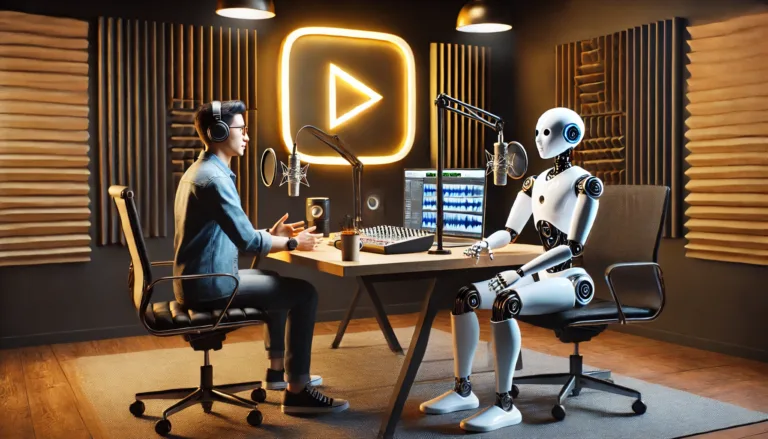- Before diving into the fascinating world of TARS from the movie Interstellar, it’s important to note that this article will not contain any spoilers. If you haven’t watched the movie yet, you can still enjoy this piece without worrying about plot details.
In the 2014 science fiction epic Interstellar, directed by Christopher Nolan, one of the standout characters is not human but a robot named TARS. TARS is an AI-driven robotic assistant, notable for its unique design and versatile capabilities. The character’s personality and practical use throughout the film have made it one of the most memorable representations of artificial intelligence (AI) in recent cinema. But beyond its on-screen presence, TARS raises intriguing questions about how such an AI could function in real life, and what the future of robotics might hold if we were to create machines similar to TARS.
The Design of TARS: A Practical Masterpiece
TARS’s design is unlike the typical humanoid robots often depicted in science fiction. Instead of mimicking human form, TARS is a modular, monolithic structure made up of rectangular blocks that can reconfigure themselves into various shapes. This design is not just aesthetically unique but also highly practical.
In real life, the design of TARS suggests a focus on adaptability and durability. Traditional humanoid robots often face limitations in mobility and versatility because they are designed to emulate human anatomy, which isn’t always the most efficient for every task. TARS, however, can change its form to suit different environments, from narrow corridors to rough terrains. This modularity could inspire future robotic designs that prioritize function over form, leading to machines that are better suited to a wider range of tasks and conditions.
The AI of TARS: Beyond Simple Commands
What truly sets TARS apart is not just its physical design but the artificial intelligence that drives it. TARS’s AI is capable of performing complex tasks, engaging in natural language conversations, and even displaying a sense of humor. This AI is sophisticated enough to understand context, make decisions, and adapt to new situations—traits that are hallmarks of advanced AI systems.
1. Natural Language Processing (NLP)
One of the most impressive aspects of TARS’s AI is its ability to communicate with humans in a natural, conversational manner. This is achieved through advanced Natural Language Processing (NLP), a branch of AI that enables machines to understand, interpret, and generate human language. In real life, NLP is already being used in applications like voice assistants (e.g., Siri, Alexa), chatbots, and translation services. However, the level of NLP depicted in TARS is far beyond what we currently have.
For TARS to function as it does in the movie, it would require an NLP system that not only understands language but also the subtleties of tone, context, and even emotion. This would involve deep learning models trained on vast amounts of conversational data, enabling the AI to predict and respond to human speech in a way that feels natural and intuitive. In practice, this could lead to AI systems that are better at understanding human needs and responding appropriately, making them invaluable in fields like customer service, therapy, and personal assistance.
2. Autonomous Decision-Making
Another key feature of TARS’s AI is its ability to make autonomous decisions. In the movie, TARS is entrusted with critical tasks that require not just following pre-programmed instructions but making real-time decisions based on changing circumstances. This kind of autonomy is a significant challenge in AI development.
For a real-life TARS to exist, it would need a highly advanced decision-making system. This would likely be based on reinforcement learning, a type of machine learning where an AI learns to make decisions by receiving feedback from its actions in the environment. Over time, the AI would improve its decision-making by optimizing for the best outcomes, much like how humans learn from experience. Such an AI could be deployed in scenarios where human intervention is not possible, such as deep space exploration, disaster response, or hazardous environments.
3. Ethical AI and Moral Judgments
One of the most intriguing aspects of TARS’s AI is its ability to make moral judgments. Throughout the film, TARS is portrayed as having a certain level of ethical reasoning, capable of making decisions that take into account the well-being of its human counterparts. In real life, the development of ethical AI is an ongoing challenge.
AI systems, like a hypothetical real-world TARS, would need to be equipped with ethical guidelines and moral reasoning capabilities to function in environments where human lives are at stake. This might involve programming the AI with ethical principles or developing systems that can weigh the consequences of different actions and choose the most ethical outcome. Researchers are already working on such systems, though they are still in the early stages.
The Practical Applications of TARS-Like AI
If we could create an AI like TARS, the practical applications would be nearly limitless. Here are a few areas where such an AI could revolutionize industries:
1. Space Exploration
Given that TARS was designed for space missions in Interstellar, it’s fitting to consider how a similar AI could be used in real-life space exploration. NASA and other space agencies are already exploring the use of AI in various capacities, from autonomous spacecraft navigation to robotic assistants for astronauts. A TARS-like AI could take this further by managing complex missions, making real-time decisions, and even acting as a companion to human crew members on long-duration missions.
2. Search and Rescue Operations
The adaptability and autonomous decision-making abilities of TARS would make it an ideal candidate for search and rescue operations in disaster-stricken areas. Whether navigating through the rubble of an earthquake or exploring hazardous environments like burning buildings or toxic spill zones, a TARS-like robot could go where humans cannot, assessing situations and making life-saving decisions on the fly.
3. Healthcare and Elderly Care
In the healthcare industry, a TARS-like AI could revolutionize patient care. With its advanced NLP capabilities, it could interact with patients, understand their needs, and provide comfort and companionship. Its decision-making abilities could be used to monitor patient health in real-time, making critical decisions in emergency situations. In elderly care, such an AI could assist with daily tasks, offer companionship, and ensure the safety and well-being of older adults.
4. Military and Defense
TARS’s abilities would also have significant implications for military and defense applications. A robot with autonomous decision-making, advanced communication skills, and adaptability could be deployed in various military roles, from reconnaissance to bomb disposal. However, this also raises ethical concerns about the use of AI in warfare, particularly in the development of autonomous weapons.
The Challenges of Creating a Real-Life TARS
While the potential applications of a TARS-like AI are exciting, creating such a system presents significant challenges.
1. Technological Limitations
One of the primary hurdles is the current state of AI and robotics technology. While we have made significant strides in machine learning, NLP, and robotics, we are still far from achieving the level of sophistication seen in TARS. Creating an AI that can understand context, make ethical decisions, and autonomously adapt to new environments requires advances in several areas of research, including deep learning, cognitive computing, and robotics.
2. Ethical and Moral Considerations
As AI becomes more advanced, the ethical implications become more complex. How do we ensure that an AI like TARS makes decisions that are in the best interest of humans? What guidelines should be in place to govern its actions? These are questions that researchers and ethicists are grappling with today. The development of ethical AI is not just a technical challenge but a philosophical one, requiring input from a wide range of disciplines.
3. Social and Economic Impact
The widespread deployment of AI like TARS could have significant social and economic implications. For example, the automation of jobs traditionally done by humans could lead to job displacement in certain industries. On the other hand, the creation of advanced AI could lead to new industries and job opportunities. Balancing these impacts will be crucial as we move forward with AI development.
Conclusion: TARS from Interstellar serves as a powerful example of what AI could achieve in the future. While we are not yet at the point where such an AI exists, the film provides a vision of how advanced robotics and AI could work together to perform complex tasks, make autonomous decisions, and even engage in human-like interactions.
In real life, creating a TARS-like AI would require significant advances in technology, ethical considerations, and careful thought about the social impacts. However, as AI research continues to progress, the day may come when robots like TARS are not just science fiction but an integral part of our world. The legacy of TARS reminds us of the potential—and the challenges—that lie ahead as we continue to explore the possibilities of artificial intelligence. As we push the boundaries of what AI can do, the lessons from TARS will guide us in creating systems that are not just intelligent but also ethical, adaptable, and ultimately beneficial to humanity.




